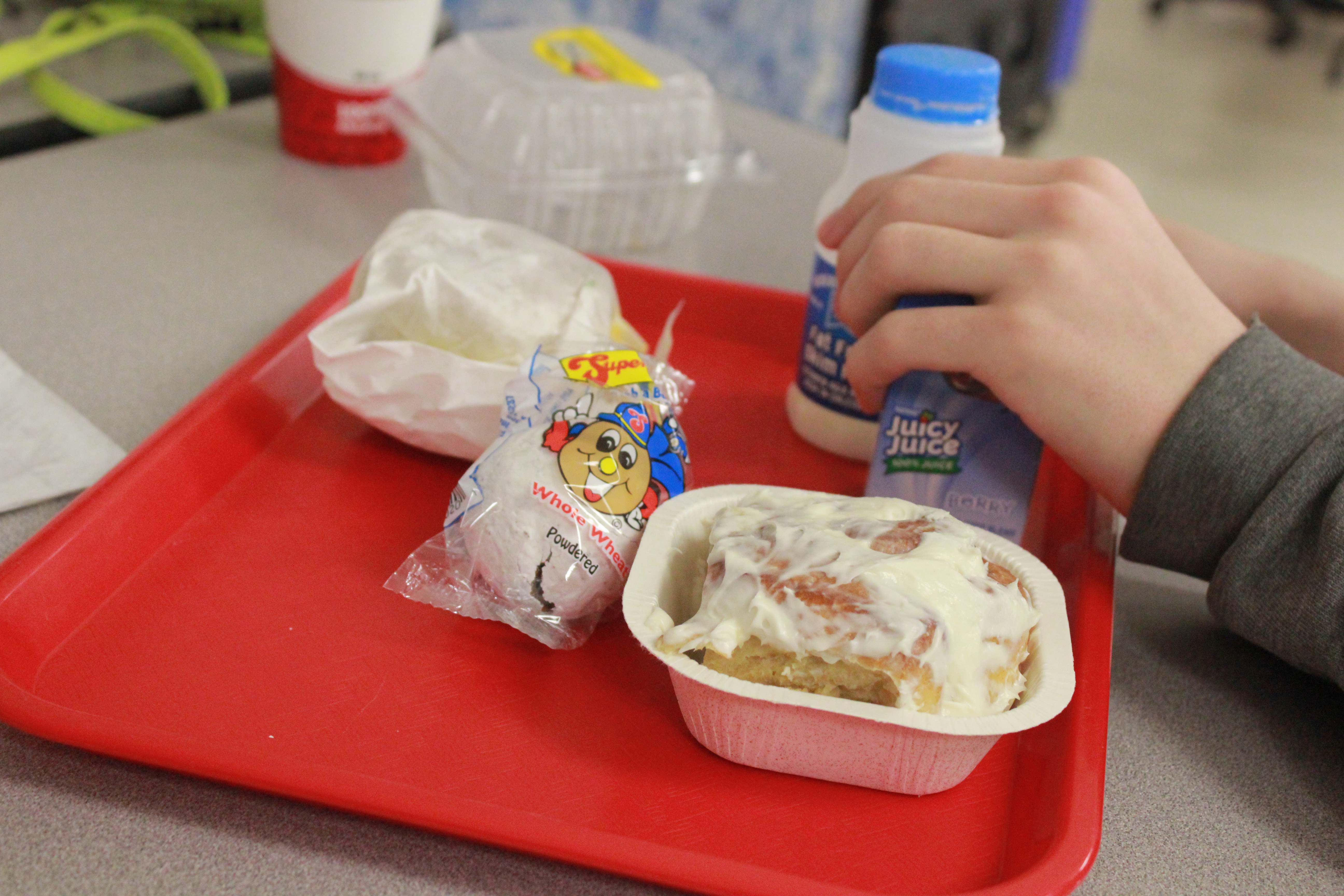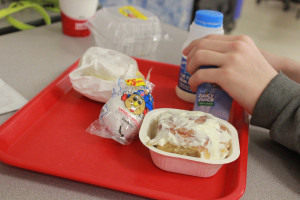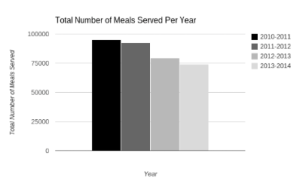New Recipes For Success: Food service staff hope to lure students back with more choices, greater freedom

On Feb. 16, CFHS food service staff members implemented several changes in the cafeteria. Students were met with new trays, an extended veggie bar, a broader a la carte, a new condiment bar, as well as the opportunity to start serving themselves in the main line.
Due to the success of these initial changes, another change is coming on Monday, April 6. Starting then, a new extended main line menu will offer four daily hot entree options. On a three-week rotation schedule, this new menu will include some student favorites, as well as some new selections, such as ordered-in pizza and pasta bar.
On each day, food service staff plan to have two of the hot entrees served on one line, while the other two will be served on the other. Each line will be clearly labeled with it’s individual hot entree options. The cold entree options, fruits, vegetables, desserts and beverage selections will be the same on each line.
Martha Korneisel, CFHS food service secretary, said the staff has been making these changes as an attempt to increase student involvement in the lunch program. Though the Cedar Falls School District houses around 5,000 students, only about 3,000 eat school lunch daily, and the graph pictured on the right shows that, ever since the installment of Michelle Obama’s federal Healthy, Hunger-Free Kids Act of 2010, student participation in the high school lunch program has steadily declined, dropping from 95,043 meals served during the 2010-11 school year to 74,127 meals served during the 2013-14 school year.
The food service receives a state reimbursement for each meal served, and because the number of meals served is decreasing each year, the program is losing more and more money. The Act’s restrictions on the fat, calorie, carbohydrate and sodium contents of meals extremely limited what the food service was allowed to serve, causing student lunch participation, and thus essential revenue, to drop.
“It’s been a struggle not just for us, but for schools around the country. Many have low participation and are losing money,” Korneisel said.
To combat the decline, first, two staff members travelled to two stable school lunch programs in Iowa — Waukee and Linn-Mar — to see what they were doing that kept students eating. The major positive element they noticed was present at each school: students were able to serve themselves. It just made sense. Not only are high school students old enough, self-sufficient enough and responsible enough to serve themselves, this approach also cuts down on the program’s labor and paper waste costs, which raises it’s net value.
Second, by taking daily inventory and holding monthly menu meetings, staff members easily discovered which entree items were most popular. Staff members hope that cutting the original six-week cycle menu into a three-week cycle menu and including more of the most-liked entrees each day will appeal highly to students.
Finally, manufacturers are also aiding in the attempt to raise student participation in the CFHS lunch program. “Initially, many of our manufacturers couldn’t change their recipes fast enough [to accommodate the Act.] Now they’re finally getting there, so it’s getting easier to provide a broader variety of options like you’d have if you went to a restaurant,” Korneisel said. This will include a larger, more appealing selection of main line and a la carte items, making increased involvement in the program more promising.
Though some staff members are apprehensive of allowing students more freedom in their meal and condiment portioning, due to the strict punishments the program receives if students receive a higher of content of fat, calories, carbohydrates or sodium than allowed, they’re all ready to be more trusting and lenient with students if that’s what it takes to increase involvement. “Our goal is simply to feed children who might not have enough. Kids aren’t eating, so are we even meeting our goal, or have we forgotten it completely?” Korneisel asked.
Similar changes are being made in the CF elementary schools. They are occasionally offering those students alternative entrees, similar to the bagel and cereal meals found at the high school. They also now have the choice between milk and bottled water.
Even after the early fixes in February, it looks like the changes are working. Before the changes, the high school was averaging 8,236 meals served per month, but since the changes, that number has slightly risen to 8,306.
Many CFHS students are responding in a positive manner as well. Junior Andrew Nurse said the wide variety of fruits and vegetables offered “makes me feel healthier about my food choices,” and senior Hiram Marquez said, “I love to have more options. Plus, I like how [because the veggie bar was moved to the end of the line], people can’t cut me.”
Junior Lizzie Swanson said, “I like the extended salad bar because I like to get spinach every day. I’d also like having more entree options because when there’s only one option that I don’t like, I don’t eat much that day,” And junior Ethan Smith said, “I like that they are returning Pizza-Hut pizza.”
Of course some students still have some hesitations. “I like the old trays. They had more space. It’s hard to stack the blue trays,” senior Adrian Amjadi said, and sophomore Grace Kivett said, “I wish we had lines back.” Staff members are doing their best to accommodate everyone.
They themselves even have mixed feelings about it all. They love that there are more fruit and vegetable options available, but they don’t like having to follow state and federal guidelines. “They make it hard for us. Plus, they aren’t right for everyone. We get complaints from parents saying their kids are still hungry. An athlete has to consume more calories than others. They need more. The system’s flawed, but we do the best we can,” Korneisel said.
Anyone can submit their thoughts, insights, ideas and complaints to the food service program by emailing nutrition@cfschools.org or contacting high school food service manager Rachelle Compton or assistant manager Sarah Schumacher. Hearing students’ perspectives on how to realistically make the lunch program more appealing is the best way they can increase student involvement.











You must be logged in to post a comment Login